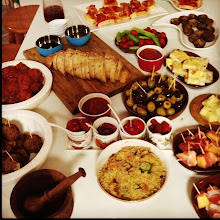Ever
wondered which out of plastic or wooden chopping boards is better?
- Wooden chopping boards have been proven to be more hygienic than plastic chopping boards due to the fact that wooden boards have a natural tannin in them that acts as an anti-bacterial agent, they also draw the bacteria down under the surface where it trapped. They are also less likely to dull your knives. When using plastic chopping boards, the blade of the knife can create tiny cuts and grooves on the surface, and the bacteria can get caught in these crevasses and tiny fibres. Once they are there, there is no way of removing them.
- Chopping boards are an essential part of any kitchen, so here are some tips on how to best clean and maintain your chopping boards.
-
General Chopping Board Tips: -
There are some general tips that are useful for cleaning and maintaining chopping boards, no matter what type you choose to use:
- Never put ready to eat food such as salads, breads etc, on a chopping board that has had raw meat on it previously, unless it has first been thoroughly washed.
- Always prepare meat on a separate chopping board where practical. Ideally, chicken, seafood, and red meats will be prepared on different boards.
- A separate chopping board for garlic and onion is a good idea too, as these are strong flavours which may effect the flavour of other foods.
- Colour code your chopping boards – this can be done using coloured string around the grip rather than using different colours of plastic boards.
- Glass and marble chopping boards look fantastic and are very hygienic but they will quickly dull your knives. Best left as heat mats for your hot pans!
- Store chopping boards in a rack. This will allow the air to freely circulate around them.
- Maintaining Wooden
Chopping Boards
- Wooden chopping boards do require special cleaning and maintenance to keep them in top condition. Never put your wooden chopping board in the dishwasher as the water and the heat will cause the glues to deteriorate.
- Wooden chopping boards should be scrubbed after use with hot, soapy water, before rinsing them, wiping them off and allowing them to dry completely.
- A paste of baking soda and water can clean and deodorise a wooden board, while bicarb soda and lemon juice is a fantastic way to remove stains and disinfect boards. It is enough to physically scrub the board as wood has been proven to be naturally antibacterial.
- The board should be oiled
monthly using a neutral vegetable oil such as grape seed oil or
olive oil. This will keep the board in great condition. Always
replace boards that have visible cracks as the cracks retain
possible bacteria.
- Maintaining plastic
chopping boards (if you choose to use one)
- Plastic chopping boards if possible are best if they can be placed in the dishwasher, where the hot rinse cycle will kill bacteria. If you don’t have a dishwasher, scrub the board thoroughly with hot, soapy water, before rinsing and allowing to dry.
- To clean and deodorise a plastic board, use one teaspoon of bleach to one litre of water. Saturate the surfaces of the board and allow to stand for five minutes before rinsing and drying.

No comments:
Post a Comment